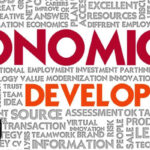Economic growth theories have long been a cornerstone of economic discourse, guiding policymakers and economists in understanding the factors that propel nations forward. Among these theories, Exogenous Growth Theory stands as a distinct perspective that emphasizes the role of external factors, particularly technological progress, in driving economic development.
In this blog post, we talk about the intricacies of Exogenous Growth Theory, exploring its foundations, historical development, empirical evidence, criticisms, policy implications, and contemporary relevance.
Table of Contents
ToggleWhat is Exogenous Growth Theory | Different Definitions
Exogenous Growth Theory is an economic framework that posits that economic growth is primarily driven by external factors, particularly technological progress, rather than by internal factors such as capital accumulation or human capital development. Various economists have contributed to the development and refinement of Exogenous Growth Theory, offering different definitions and perspectives on its fundamental principles. Here are some definitions by prominent economists:
-
Robert Solow (1956)
Robert Solow, a Nobel laureate economist, laid the foundation for Exogenous Growth Theory with his seminal work on the neoclassical growth model. In Solow’s model, technological progress is exogenously determined, meaning it originates outside the economic system and serves as a key driver of economic growth. Solow’s model suggests that technological advancements lead to increases in productivity and output, contributing to long-term economic expansion.
-
Paul Romer (1986)
Paul Romer expanded upon Solow’s work and introduced the concept of endogenous technological change. While acknowledging the importance of exogenous factors in driving growth, Romer argued that technological progress could also be influenced by internal factors such as investments in research and development (R&D), education, and innovation policies. Romer’s model emphasized the role of knowledge accumulation and human capital in fostering sustained economic growth.
-
Robert Lucas Jr. (1988)
Robert Lucas Jr., another Nobel laureate economist, contributed to Exogenous Growth Theory through his research on the role of human capital and innovation in driving economic development. Lucas emphasized the importance of knowledge spillovers and externalities in fueling technological progress. His work highlighted the dynamic interactions between individuals, firms, and institutions in shaping the pace and direction of technological change.
-
Philippe Aghion and Peter Howitt (1992)
Philippe Aghion and Peter Howitt further advanced Exogenous Growth Theory by incorporating elements of Schumpeterian economics into their models. They emphasized the role of creative destruction, whereby new innovations displace outdated technologies and industries, driving productivity gains and economic growth. Aghion and Howitt’s research underscored the importance of competition, entrepreneurship, and institutional frameworks in fostering innovation-led growth.
-
Charles Jones (1995)
Charles Jones contributed to Exogenous Growth Theory through his research on the relationship between technological progress and income convergence across countries. Jones argued that technological diffusion, driven by factors such as trade openness and institutional quality, plays a crucial role in narrowing income disparities between developed and developing nations. His work highlighted the importance of policy interventions in facilitating technology transfer and adoption.
These definitions by various economists offer different perspectives on Exogenous Growth Theory, emphasizing the central role of external factors, particularly technological progress, in driving long-term economic growth. While the precise mechanisms and drivers of growth may vary across models, the overarching principle of exogenous factors shaping economic development remains a common thread in Exogenous Growth Theory.
Foundations and History
At the core of Exogenous Growth Theory lies the concept of exogeneity — the idea that certain factors impacting economic growth are external and independent of the economic system. These exogenous factors, prominently technological advancements, inject momentum into economic expansion. Unlike endogenous factors that arise from within the system, exogenous factors are viewed as drivers that can initiate and sustain growth.
The evolution of Exogenous Growth Theory can be traced through the contributions of key economists. Early theorists like Robert Solow laid the groundwork by integrating exogenous factors, particularly technological progress, into growth models. Over time, subsequent economists refined and expanded these models, incorporating a broader understanding of external forces shaping economic development.
Components of Exogenous Growth Theory
Exogenous Growth Theory posits that economic growth is primarily driven by external factors, particularly technological progress that originates outside the economic system. Understanding the components of exogenous growth provides insights into the key drivers and mechanisms that fuel long-term economic expansion. Here’s a detailed explanation of the components of exogenous growth:
-
Technological Progress:
At the heart of Exogenous Growth Theory lies technological progress, which refers to advancements in knowledge, innovation, and technology that enhance productivity and efficiency in the production process.
Technological progress can take various forms, including inventions, discoveries, improvements in production techniques, and the adoption of new technologies across industries.
Exogenous growth models assume that technological progress is exogenously determined, meaning it originates from sources external to the economic system, such as scientific research, development activities, and knowledge spillovers.
-
Research and Development (R&D):
Investments in research and development play a crucial role in fostering technological progress and innovation, thereby driving economic growth.
R&D activities encompass scientific research, experimentation, and the development of new products, processes, and technologies.
Governments, businesses, and academic institutions often allocate resources to R&D efforts to spur innovation and generate technological breakthroughs that can propel economic development.
-
Human Capital Accumulation:
Human capital, defined as the knowledge, skills, and expertise embodied in individuals, is a vital component of exogenous growth.
Investments in education, training, and skills development contribute to the accumulation of human capital, enhancing the workforce’s productivity and adaptability to technological change.
Highly educated and skilled workers are better equipped to innovate, adopt new technologies, and drive productivity gains, thereby stimulating economic growth.
-
Knowledge Spillovers:
Knowledge spillovers occur when technological knowledge and innovations generated in one sector or firm diffuse to other sectors or firms, leading to broader productivity improvements across the economy.
Spillovers can occur through various channels, including informal networks, collaborations, trade relationships, and labor mobility.
Policies that promote knowledge sharing, collaboration, and open innovation facilitate the spread of ideas and technologies, amplifying their impact on economic growth.
-
Externalities and Network Effects:
Externalities refer to the positive or negative impacts of economic activities on third parties not directly involved in the transaction. In the context of exogenous growth, positive externalities associated with technological innovation can generate widespread benefits for society.
Network effects occur when the value of a product or service increases as more people use it. In the case of technological innovations, network effects can accelerate the adoption and diffusion of new technologies, amplifying their impact on economic growth.
-
Institutional Frameworks:
Institutional frameworks, including intellectual property rights, regulatory environments, and governance structures, play a critical role in facilitating or hindering technological progress and innovation.
Strong intellectual property rights protect the incentives for innovation by granting innovators exclusive rights to their creations, encouraging investment in R&D.
Transparent and efficient regulatory environments provide certainty and incentives for businesses to invest in innovative activities, while effective governance structures ensure the allocation of resources to productive uses.
Understanding the components of exogenous growth underscores the multifaceted nature of the forces driving economic development. Technological progress, supported by investments in R&D, human capital accumulation, knowledge spillovers, externalities, and institutional frameworks, serves as the engine of long-term economic growth, shaping the trajectory of nations and societies. Policymakers, businesses, and institutions can leverage these components to foster an environment conducive to innovation, productivity enhancement, and sustainable economic expansion.
Importance of Exogenous Growth Theory
The importance of Exogenous Growth Theory lies in its ability to offer insights into the mechanisms driving long-term economic development, particularly through the lens of external factors such as technological progress. Here are several key reasons why Exogenous Growth Theory is significant:
-
Understanding the Sources of Economic Growth
Exogenous Growth Theory provides a framework for understanding the sources of economic growth beyond traditional factors like capital accumulation and labor inputs. By emphasizing external drivers such as technological progress, the theory sheds light on the underlying mechanisms that propel economies forward over time.
-
Technological Progress and Innovation
One of the central pillars of Exogenous Growth Theory is the role of technological progress in driving economic development. By focusing on external advancements in technology, the theory highlights the importance of innovation, research and development (R&D), and knowledge creation in fostering productivity gains and efficiency improvements across sectors.
-
Explaining Disparities in Growth Rates
Exogenous Growth Theory helps explain variations in growth rates and development outcomes among countries. Nations that invest in R&D, education, and infrastructure tend to experience higher rates of technological progress and economic growth compared to those that rely solely on capital accumulation or natural resource endowments.
The theory provides insights into the factors that contribute to these disparities and offers guidance for policymakers seeking to promote sustainable growth.
-
Policy Implications
The insights derived from Exogenous Growth Theory have significant policy implications. Governments and policymakers can use the theory to design strategies that foster innovation, human capital development, and institutional reforms conducive to economic growth.
By investing in technology, education, and supportive regulatory frameworks, countries can create an environment conducive to sustained economic development.
-
Long-Term Growth Prospects
Exogenous Growth Theory highlights the importance of sustained technological progress and innovation in driving long-term growth prospects. Unlike models based solely on diminishing returns to capital, which predict convergence to a steady state, Exogenous Growth Theory suggests that economies can experience sustained growth through continuous advancements in technology.
This perspective is particularly relevant in the context of knowledge-based economies where intangible assets such as intellectual property and innovation capacity play a crucial role.
-
Addressing Global Challenges
In an era characterized by rapid technological change, globalization, and environmental challenges, Exogenous Growth Theory provides insights into addressing global issues such as income inequality, environmental sustainability, and technological diffusion.
By promoting inclusive growth, green technologies, and international collaboration in R&D, countries can harness the potential of technological progress to address pressing societal challenges and achieve sustainable development goals.
Exogenous Growth Theory is important for its ability to elucidate the role of external factors, particularly technological progress, in driving economic development.
By understanding the mechanisms underlying growth, policymakers can design effective strategies to foster innovation, human capital accumulation, and institutional reforms, thereby promoting sustained and inclusive economic growth over the long term.
Criticisms and Limitations
Exogenous Growth Theory, while offering valuable insights into the role of external factors in driving economic development, is not without criticisms and limitations. Here are some key criticisms and limitations associated with Exogenous Growth Theory:
-
Simplistic Treatment of Technology
Critics argue that Exogenous Growth Theory often oversimplifies the nature of technological progress by treating it as an exogenous variable that is independent of economic forces. In reality, technological advancements are influenced by a complex interplay of factors, including investments in research and development, human capital accumulation, and institutional frameworks. Ignoring these endogenous determinants of technological change may lead to an incomplete understanding of the growth process.
-
Limited Focus on Structural Change
Exogenous Growth Theory tends to prioritize overall economic growth without adequately addressing structural changes within the economy. While technological progress may lead to aggregate growth, it may also exacerbate inequalities, disrupt traditional industries, and create winners and losers in the process. Critics argue that Exogenous Growth Theory’s narrow focus on aggregate growth overlooks the distributional consequences and structural transformations associated with technological change.
-
Assumption of Homogeneous Technology
Some versions of Exogenous Growth Theory assume homogeneous technology across countries, implying that all nations have equal access to technological advancements. However, in reality, technology diffusion is uneven, with developed countries often possessing a technological edge over their less developed counterparts. This assumption fails to account for the disparities in technological capabilities and access, leading to inaccurate predictions about income convergence and growth dynamics.
-
Neglect of Institutional Factors
Exogenous Growth Theory often overlooks the role of institutional factors in fostering or hindering technological progress and economic growth. Institutions, such as property rights protection, rule of law, and regulatory frameworks, play a crucial role in incentivizing innovation, entrepreneurship, and investment in human capital. Ignoring institutional differences across countries may limit the applicability of Exogenous Growth Theory in explaining variations in growth rates and development outcomes.
-
Inadequate Treatment of Human Capital
While Exogenous Growth Theory acknowledges the importance of human capital in driving economic growth, it may not fully capture the complexities of human capital accumulation and its interaction with technological progress. Investments in education, skills training, and healthcare are critical determinants of productivity and innovation, yet Exogenous Growth Theory may not sufficiently integrate these factors into its growth models.
-
Difficulty in Empirical Testing
Empirically testing Exogenous Growth Theory poses challenges due to the inherent difficulty in measuring exogenous factors such as technological progress. Unlike endogenous factors like physical capital or human capital, which can be quantified more easily, exogenous variables are often intangible and subject to measurement errors. This limitation may hinder the validation and refinement of Exogenous Growth Theory through empirical analysis.
-
Policy Prescriptions May Be Oversimplified
Exogenous Growth Theory’s policy prescriptions, which often emphasize investments in R&D, innovation, and technology adoption, may be oversimplified and fail to account for the diverse needs and contexts of different economies. Effective policy interventions require a nuanced understanding of the institutional, social, and economic factors driving growth, which Exogenous Growth Theory may not adequately capture.
Exogenous Growth Theory offers valuable insights into the role of external factors, particularly technological progress, in driving economic development, it is not immune to criticisms and limitations. Addressing these criticisms requires a more holistic approach that integrates endogenous and exogenous factors, considers institutional and structural dynamics, and recognizes the complexities of technological change and human capital accumulation.
Exogenous Growth Theory | Definition | Components | Importance | Limitations | PDF Free Download |
Conclusion
Exogenous Growth Theory offers a unique lens through which we can comprehend the intricate dance between external forces and economic development. As we navigate an era defined by rapid technological advancements and global interconnectivity, the lessons gleaned from this theory provide valuable insights. Acknowledging its historical foundations, empirical evidence, criticisms, and policy implications, we equip ourselves to address the challenges and opportunities presented by an ever-evolving economic landscape. In doing so, we embrace the continual pursuit of understanding the external forces propelling us toward sustained and inclusive economic growth.
See Also: Differences between Economic Growth and Economic Development










